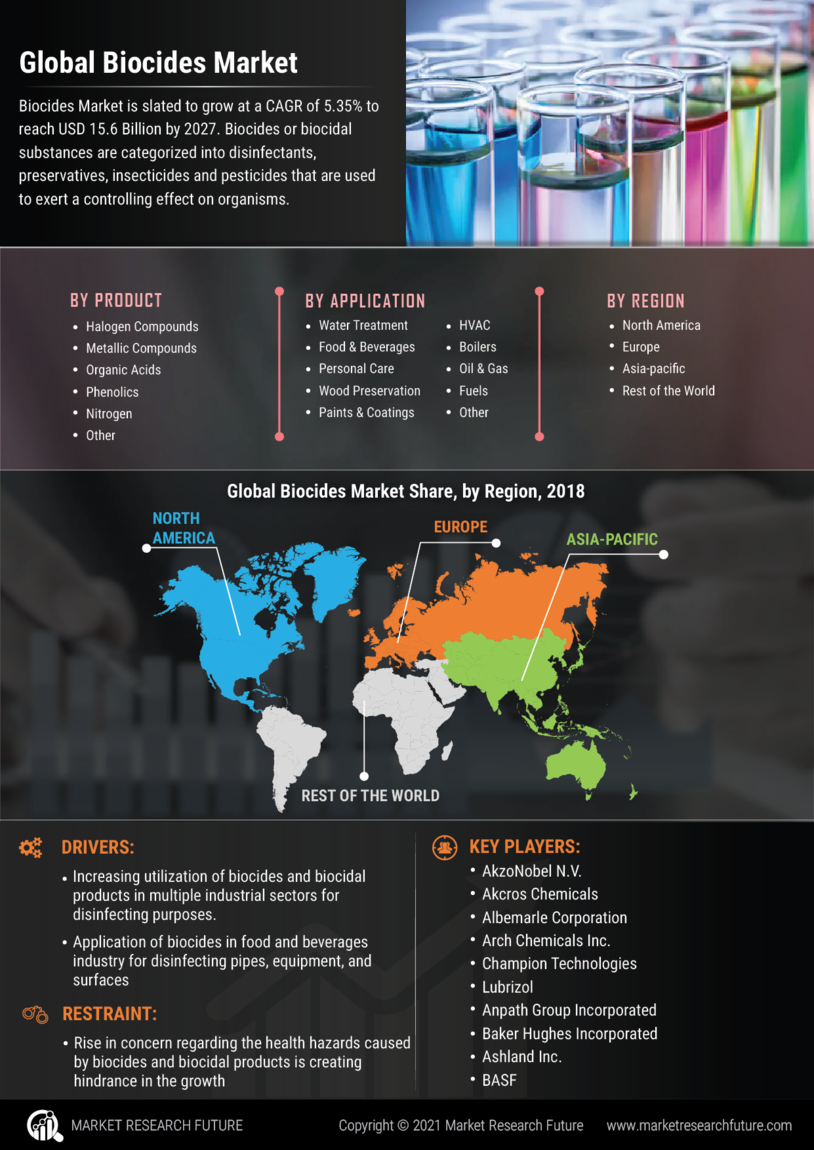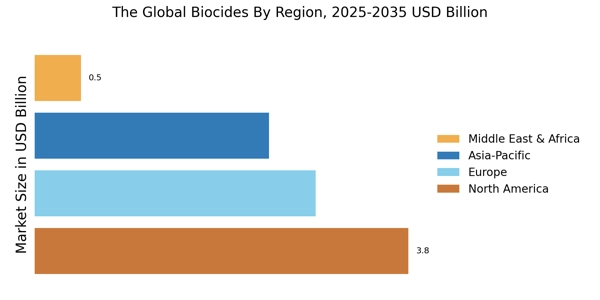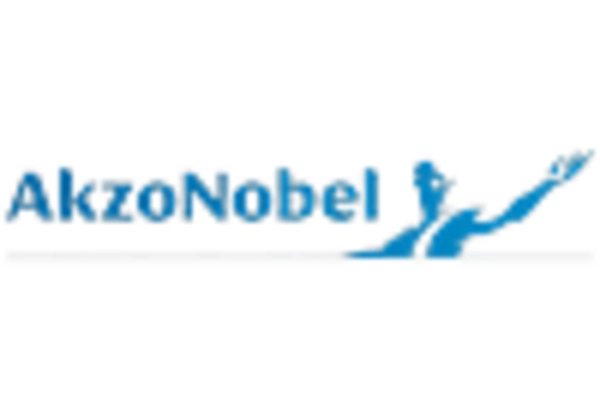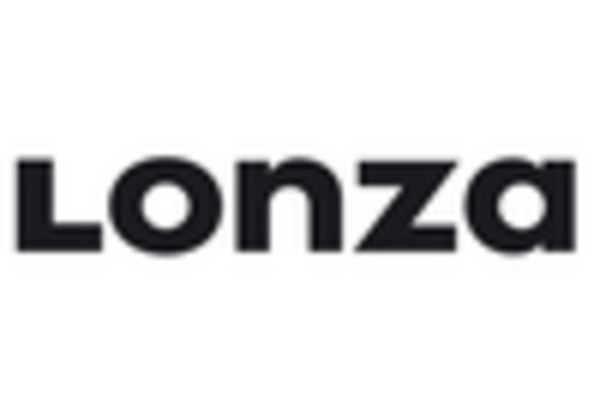Increased Focus on Food Safety
Food safety remains a paramount concern globally, driving the demand for biocides in food processing and preservation. The Global Biocides Industry is experiencing a surge in the use of biocidal products to ensure the safety and quality of food products. Regulatory bodies are imposing stricter guidelines on food safety, which is likely to propel the adoption of biocides in various stages of food production. Market data indicates that the food and beverage sector is expected to witness a growth rate of around 5% in biocide usage, as manufacturers seek to comply with safety standards and consumer expectations. This trend highlights the critical role of biocides in maintaining food hygiene and preventing contamination.
Growth in the Construction Sector
The construction industry is witnessing a resurgence, which is contributing to the growth of the biocides market. Biocides Market are increasingly used in construction materials to prevent microbial growth, thereby enhancing the durability and longevity of structures. The Global Biocides Industry is benefiting from this trend, as the demand for biocidal products in paints, coatings, and wood preservation continues to rise. Recent market analyses suggest that the construction sector could account for a significant portion of biocide consumption, with growth rates projected to exceed 4% in the next few years. This growth is driven by the need for sustainable building practices and the increasing awareness of the importance of material protection against microbial threats.
Rising Demand in Water Treatment Applications
The increasing necessity for effective water treatment solutions is a pivotal driver in the biocides market. As waterborne diseases continue to pose health risks, the demand for biocides in water treatment applications is expected to surge. The market for water treatment biocides is projected to grow significantly, with estimates suggesting a compound annual growth rate of over 5% in the coming years. This growth is largely attributed to the need for safe drinking water and the treatment of industrial wastewater. Consequently, The Global Biocides Industry is witnessing heightened investments in innovative biocide formulations that enhance efficacy while minimizing environmental impact. The focus on sustainable practices further amplifies the demand for biocides that comply with stringent regulations, thereby shaping the future landscape of the industry.
Technological Innovations in Biocide Development
Technological advancements are playing a crucial role in shaping the biocides market. Innovations in formulation technologies are leading to the development of more effective and environmentally friendly biocides. The Global Biocides Industry is witnessing a shift towards products that offer enhanced performance with reduced toxicity. Research and development efforts are focused on creating biocides that are not only effective against a broad spectrum of microorganisms but also comply with evolving regulatory standards. Market forecasts suggest that the introduction of novel biocidal agents could drive market growth by approximately 7% over the next few years. This emphasis on innovation is likely to redefine the competitive landscape of the industry, as companies strive to meet the demands of a more environmentally conscious market.
Expanding Applications in Healthcare and Pharmaceuticals
The healthcare and pharmaceutical sectors are increasingly adopting biocides for their antimicrobial properties, which is driving growth in the biocides market. The rising prevalence of hospital-acquired infections has led to a heightened focus on infection control measures, thereby increasing the demand for biocidal products. The Global Biocides Industry is experiencing a notable shift, with biocides being utilized in disinfectants, antiseptics, and sterilization processes. Market data indicates that the healthcare segment is expected to account for a substantial share of the biocides market, with a projected growth rate of approximately 6% annually. This trend underscores the critical role of biocides in maintaining hygiene and safety standards in healthcare settings, further solidifying their importance in the industry.


















Leave a Comment